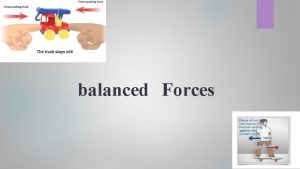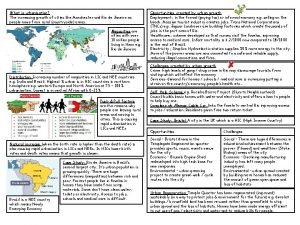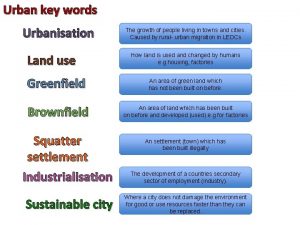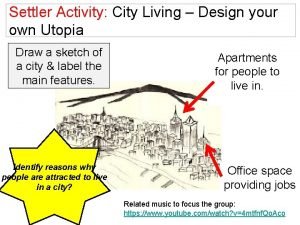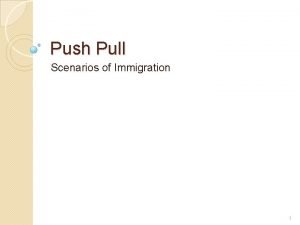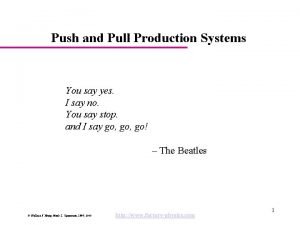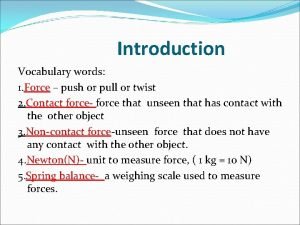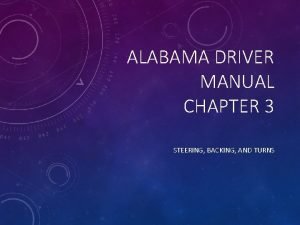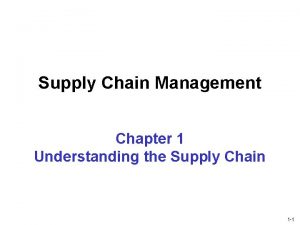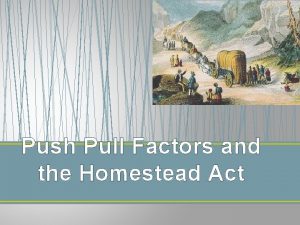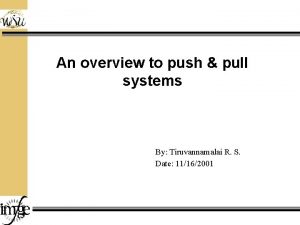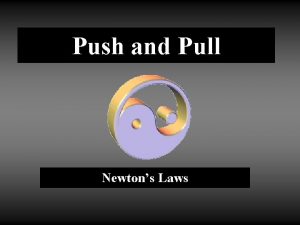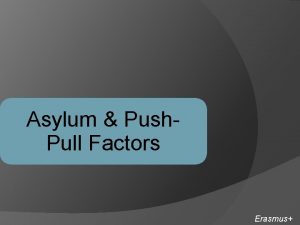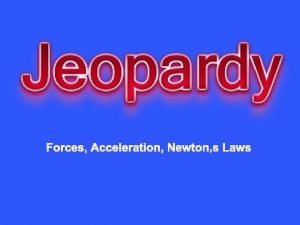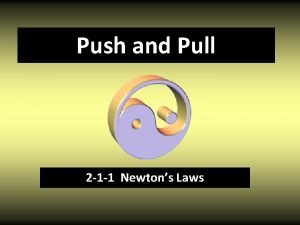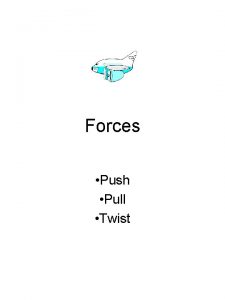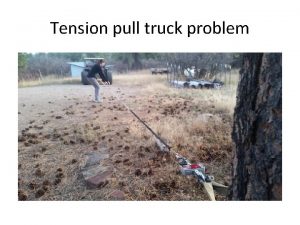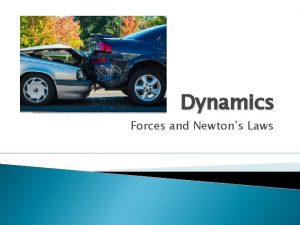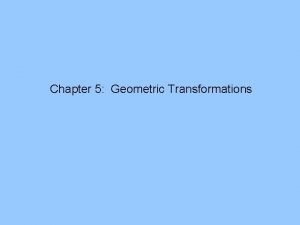Forces and Newtons Laws Push pull and the

















- Slides: 17

Forces and Newton's Laws Push, pull and the consequences.

Dynamics! The study of movement The study of the effect of force on matter

Force A force is a push or a pull There are 4 main forces in the universe: Strong nuclear force Weak nuclear force Electromagnetic force Gravity Forces can be divided into contact forces and action at a distance (field) forces

Use the Force, Luke! Forces are vectors Both magnitude AND direction must be given!

Newton's First Law Galileo did experiments and thought experiments, finally arriving at the idea of inertia. His famous ramp experiments led to this idea. A ball tries to attain the same height as it is rolled down from. But what if it rolls on a flat (frictionless) surface?

Newton’s First Law It will just keep going…. The Physics Classroom

Newton’s First Law Newton formalized this idea in his law of inertia: An object retains its motion unless acted upon by an unbalanced external net force.

Net Force Net force is the sum of all forces acting on an object. http: //www. nawama. ac. th/offline/Mahidolwittayanusorn/Disk 2/ content_02/www. physicsclassroom. com/Class/newtlaws/newtltoc. ht

Net Force Net force is the sum of all forces acting on an object. Forces are vector quantities, so direction as well as magnitude is important! If the net force is zero, the forces are balanced, and the motion of the object does not change. ***This does NOT mean that the velocity is ZERO!*** If the net force is NOT zero, the motion of the object will change.

Inertia An object's inertia (in other words, how much force is required to change its motion) is a measurement of the object's mass. This led to Newton's second law.

Newton's Second Law of Motion When a net force acts on an object, the acceleration of the object is directly proportional to the force, and inversely proportional to the mass of the object. As an equation, this is. . F = ma

Newton’s Second Law of Motion The SI unit of force is the Newton (N). 1 N is the force needed to accelerate a 1 kg mass at a rate of 1 m/s/s.

Newton’s Second Law F m a

Example 1 Two people are pushing a stalled car. The mass of the car is 1850 kg. One person applies a force of 275 N (forward) to the car. The other applies a force of 395 N (forward). A third force of 560 N also acts on the car, but in an opposing direction (you could say it’s friction). What is the acceleration of the car?

Example 1 Two people are pushing a stalled car. The mass of the car is 1850 kg. One person applies a force of 275 N (forward) to the car. The other applies a force of 395 N (forward). A third force of 560 N also acts on the car, but in an opposing direction (you could say it’s friction). What is the acceleration of the car? Answer: +0. 059 m/s/s

Example 2 P 79 An unbalanced force gives a 2. 00 kg mass an acceleration of 5. 00 m/s 2 to the east. What is the force?

Example 3 p 80 An unbalanced force of 20 N gives a stone an acceleration of 4. 0 m/s 2 to the east. What is the mass of the stone?
 Push and pull forces definition
Push and pull forces definition Push and pull factors of urbanisation
Push and pull factors of urbanisation Push and pull factors of urbanisation
Push and pull factors of urbanisation Push and pull factors of urbanisation
Push and pull factors of urbanisation Urban key house
Urban key house Your
Your Push and pull scenarios
Push and pull scenarios Push and pull system examples
Push and pull system examples Push pull profile strategies marketing communications
Push pull profile strategies marketing communications Push and pull factors of urbanisation
Push and pull factors of urbanisation Push and pull vocabulary
Push and pull vocabulary Influencing styles push pull
Influencing styles push pull Good posture at the steering wheel is important because
Good posture at the steering wheel is important because Pull supply chain
Pull supply chain Homestead act push and pull factor
Homestead act push and pull factor Push and pull
Push and pull Abe goldman
Abe goldman Push and pull chapter 7
Push and pull chapter 7
